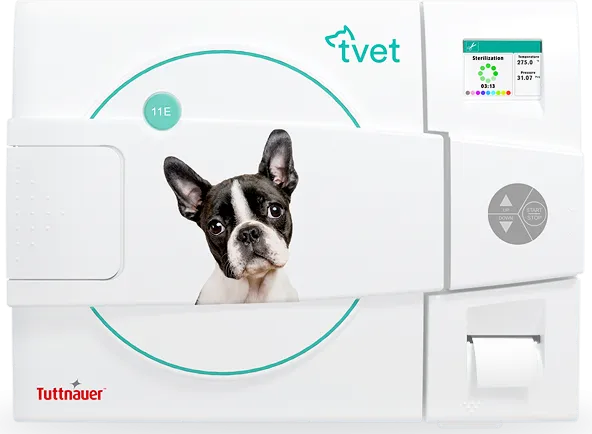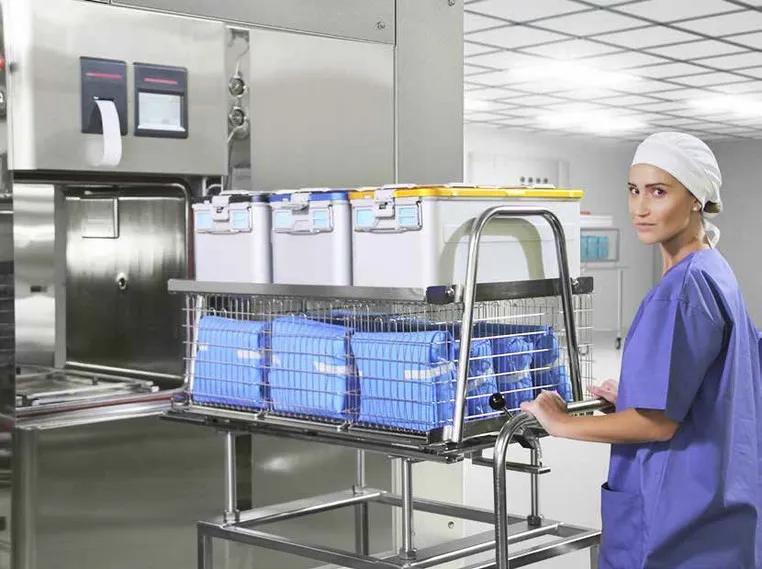These infections are preventable: a systematic approach to infection prevention and control must be implemented at every vet clinic, including your own. This requires all practice staff members to assume active roles, following instated infection prevention and control protocols at all times, to keep pet-patients and their human owners safe and healthy.
The following are best infection control practices every veterinary practice should adopt:
Establish & document a detailed infection control program
Without exception, every veterinary clinic, large and small, should formulate and implement a formal infection control program. This program should be written down in the form of an easy to scan, easy to understand and internalize, infection control manual. You might also want to acquire the services of an infection control practitioner (ICP), whose job and expertise rests in coordinating infection control programs for his various medical field clients.
Your infection control program should cover three basic areas: decreasing host exposure, decreasing host susceptibility and increasing host resistance to infectious pathogens.
Decreasing host exposure
Identify possible sources of organisms, such as skin, wounds, fecal matter, urine, saliva, blood, discharges and aerosols - and cut off exposure to said organisms. If people and pets are not allowed to encounter dangerous hosts, the risks of those hosts colonizing or infecting them are significantly reduced. While completely eliminating exposure to pet-patient may not be realistic, after all, you need to come into contact with pet patents’ bodies and fluids when examining and treating them, you and your veterinary staff can take measures to decrease exposure, whenever possible, by instilling contamination awareness programs and appropriate work conduct guidelines.
Decreasing host susceptibility
Consider what methods of transmission might lead to contamination, including hand contact, fomites, droplets, airborne and vector borne infections. In most cases, the mere exposure to a host does not directly correlate with contamination, but interacting factors, such as the above mentioned methods of transmission and individual susceptibility to a number of infections agents can lead to infectious outbreak. Efforts should be taken to address those factors within your control. Stress the importance of routine hand washing by all staff, ascertain proper sterilization practices are in order, counsel pet owners on proper nutrition for their furry friends, weigh the pros and cons of antimicrobial and other drug administration and ensure proper management of any underlying diseases your pet-patients may have.
Increasing host resistance
Take measures to actively maximize pet-patient - and staff members’ (!) resilience and immunity to possible hosts. While increasing host resistance is generally considered the third line of defense, after those intended to decrease host exposure and susceptibility, it should not be overlooked or downplayed. Ensure all patients and employees are up-to-date on their vaccines, and immunize against known microorganism threats, for which vaccines are currently available. In addition, introduce anthelmintic therapy as an anti-contamination shield and moderate your prescription of antimicrobials, to retain maximum effectiveness, should infection occur despite your most valiant efforts.
True, no vaccine is 100% effective and there are quite a few HAIs caused by stealthy microorganisms for which vaccines have yet to be developed, but in conjunction with other said host resistance methods, you can increase resilience and control outbreaks at your vet clinic.
Institute comprehensive surveillance practices
Ongoing passive and active surveillance of your vet clinic, its staff and patients can be instrumental in the identification of potential deviations from your infection control program - and may very well help nip any risk of or actual contamination in the bud. As such, some form of surveillance should routinely be practiced by you and the members of your practice, overseen by a designated ICP.

Passive surveillance - analysis of readily available data
Passive surveillance is the minimum effort you need to spend on monitoring potential infections, in the absence of an actual outbreak. It involves gathering and studying existing data on current infection rates at your clinic, as well as in the general population. This can be done via engaging in ongoing internet research, by taking bacterial cultures and testing for other infectious diseases and infectious disease susceptibility among your pet-patients and through the routine monitoring of your patients’ ingestion of antimicrobial drugs. While potentially challenging, post-discharge monitoring of your pet-patients is also a good idea, as many HAIs have longer incubation periods and only surface once the patient has returned home.
Critical to the success of your passive surveillance endeavors is the centralization of your culled data, enabling easy access and analysis, by you, as well as by your designated ICP. When organized and evaluated, the surveillance data can be instrumental in identifying potential infectious outbreaks before they become widespread, leading to swift and more precise infection control actions to be taken, as well as more efficient transitioning towards active surveillance practices.
Active surveillance - gathering data for targeted infection control
When an outbreak strikes, you want to minimize infection and send your pet-patients home quickly and in good-health. To achieve these goals, you will need to gather data specific to the infection posing a risk, by sampling organic data from all animals treated at your veterinary practice. Swabs, samples and blood tests will need to be taken from your entire patient register, regardless of whether or not they exhibit any signs of infection. While costly and time-consuming, this is the most reliable way of controlling known infections and preventing them from spreading further.
Regularly employ risk reducing strategies
This subject was touched upon briefly in an earlier section on reducing host susceptibility and will now be expanded upon to stress the importance of engaging in routine hygiene and other risk reduction activities, as an integral part of your veterinary practice operations. Poor personal hygiene and suboptimal cleaning and disinfection practices can significantly increase the risk of infection and contamination, which, in turn, can seriously harm your pet-patient, their owners and your vet clinic staff.

Essential risk reducing strategies include:
- Hand hygiene - Effective hand washing with soap and water or hand sanitizer inactivates, kills or removes microorganisms from the skin and creates a barrier between the skin and the agents it contacts. It therefore reduces the number of microorganisms acquired from a pet-patient, another person, contaminated equipment, or an infectious environment, and helps prevent them from spreading to someone else, man or beast.
- Protective clothing - Wearing personal protective equipment (PPE), such as a laboratory coat, gowns, gloves, face protection, respiratory masks and disposable shoe covers can help prevent contamination of personal clothing, reduce exposure of your skin and mucous membranes to hosts and reduce accidental transmission of pathogens between patients by veterinary staff. Normal clothing worn to and from work should always be covered or replaced by protective clothing.
- Waste and laundry management - Sharps, biomedical waste and soiled laundry should be sorted and cleaned or disposed of, in accordance with relevant guidelines and regulations. Fluids may be flushed down the toilet and solids should be double-bagged and kept in covered containers.
- Disinfection & sterilization - Organic matter should always be swiftly removed from pet clinic surfaces, which should then be cleaned with proper disinfection chemicals. Stethoscopes and smart devices should be wiped down with a disinfectant-soaked paper towel following each use and other reusable tools, including your sharps, which should be stored in a safe container, should be placed in a sterilizer or autoclave to ensure all potential infectants are adequately eradicated.
Tuttnauer - Your sterilization and infection control partners
Tuttnauer is an autoclave sterilizer manufacturer, and a provider of innovative instrument processing solutions. Our tvet line of veterinary autoclaves were developed specifically for vet practices. They meet all your sterilization needs by creating cycle parameters to accommodate double wrapped pouches. These cycles ensure sterility and efficient drying of packs and pouches, helping veterinarians meet today’s challenging workloads and provide superior pet-patient care, without risking infection or contamination.
Follow the above best practices and champion infection control at your vet clinic For more information, visit our veterinary autoclave section.